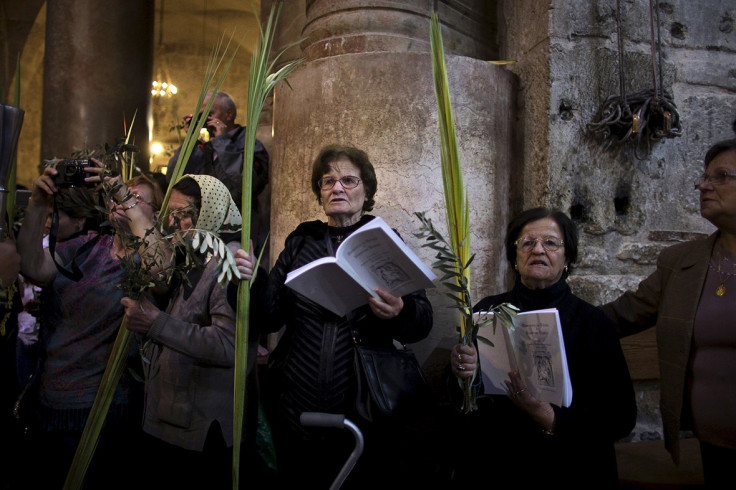Palm Sunday 2016: Top 10 facts about Christianity's religious festival

1. Riding donkeys for peace
Traditionally, entering the city on a donkey symbolises coming in peace, rather than a violent gesture as a war-faring king arriving on a horse. According to the gospels, Jesus sent two disciples to fetch a donkey that had been tied up but never been ridden, saying the donkey was needed by the Lord but would be returned. Jesus then rode the donkey into Jerusalem after the disciples had first put their cloaks on it, so as to make it more comfortable.
2. Tree Sundays
In many Christian faiths, worship services on Palm Sunday include a procession of the faithful carrying palms, representing the palm branches the crowd scattered in front of Jesus as he rode into Jerusalem. In climates where palms don't grow, the branches of native trees are substituted such as box, yew, willow and olive. The Sunday was therefore sometimes named after these trees such as Yew Sunday or Branch Sunday.
3. Palms – the immortal plant
In ancient Egyptian religion, the palm was carried in funeral processions and represented eternal life. The palm branch later was used as a symbol of Christian martyrs and their spiritual triumph over death.
4. One Feast Day down, 11 to go
Palm Sunday, or the 'Entry of the Lord into Jerusalem', as it is often called in some Orthodox Churches, is one of the 12 Great Feasts of the liturgical year.
5. Resolutions are nearly over
Palm Sunday commemorates the entrance of Jesus into Jerusalem (Matthew 21:1-9), when palm branches were placed in his path, before his arrest on Holy Thursday and his crucifixion on Good Friday. It thus marks the beginning of Holy Week, the final week of Lent.

6. Recycling for worship
In the Catholic Church, this feast now coincides with that of Passion Sunday, which is the focus of the Mass which follows the service of the blessing of palms. The palms are saved in many churches to be burned on Shrove Tuesday the following year to make ashes used in Ash Wednesday services.
7. Burning Judas
In the 15th-17th centuries in England, Palm Sunday was marked by the burning of Jack-'o'-Lent figures. This was a straw effigy which would be stoned and vilified on Ash Wednesday, and kept in the parish for burning on Palm Sunday. The symbolism was believed to be revenge on Judas Iscariot, who had betrayed Christ. The effigy could also have represented the figure of Winter, whose destruction prepares the way for Spring.
8. Finnish trick-or-treating
In Finland, many children dress up as Easter witches and go door to door in neighbourhoods for coins and candy. This is an old Karelian custom called Virpominen.
9. Colour schemes
The colours of the Mass on Palm Sunday are red and white, symbolising purity and also the blood that Jesus Christ shed during his crucifixion by the Romans.
10. Palm police protests
Faith leaders in Chicago will stage "die-ins" and deliver palms to 25 police district stations as a part of a "Palm Sunday Takeover" on 20 March. The protesting churches are calling for an end to police brutality.
© Copyright IBTimes 2024. All rights reserved.






